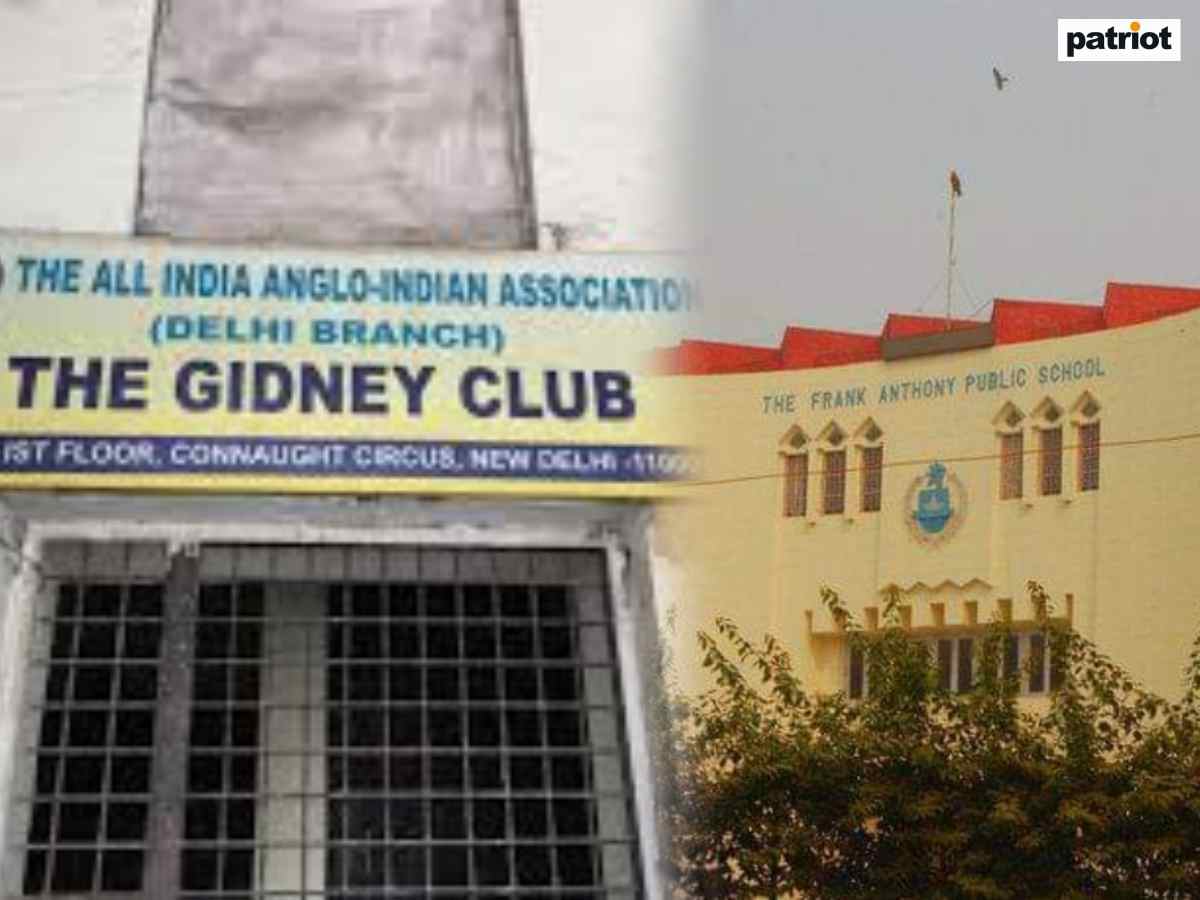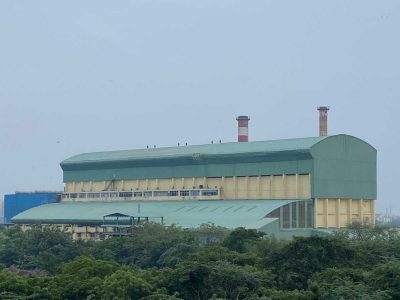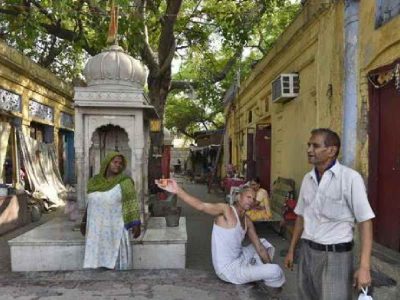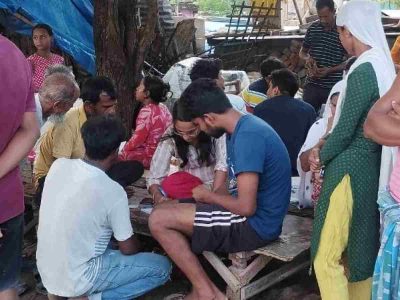Delhi: Notwithstanding the heavy traffic and ear-splitting noise outside, some people are playing cards in the quiet and peaceful atmosphere at Gidney Club, on the first floor of K-48 in Connaught Place.
Those who are playing cards are also discussing the Haveli of James Skinner at Kashmiri Gate being given a new lease of life by the Hindu College community as it also ran from here briefly.
Gidney Club, which was established in 1935, has been a meeting point for the tiny Anglo-Indian community of Delhi for decades. The wall of the Gidney Club is adorned with pictures of prominent members of the community. You can easily recognise the picture of Frank Anthony, the father figure of Anglo-Indians and founder of Frank Anthony Public School.
Apart from Gidney Club, the local Anglo-Indians consider themselves connected to St. James’ Church in Kashmere Gate. Why? Because, it was built for Protestant Christians by an Anglo-Indian soldier, James Skinner. Skinner first served the Maharaja of Gwalior before joining the East India Company. Delhi’s first and Kashmere Gate’s most prominent landmark, St. James’ Church, was built in 1836. Skinner is buried inside the campus of the church.
Also read: Delhi: Tughlakabad Metro Station to be developed as inter-connectivity hub, says DMRC
Celebrities of Anglo-Indian community
Frank Anthony was the guardian of the Anglo-Indian community in the Capital. He was a nominated Member of Parliament several times. Professor Sydney Rebeiro is another prominent name. He taught English at Delhi University for decades. His is perhaps the oldest Anglo-Indian family in Delhi. They have been in Delhi since 1909.
Professor Rebeiro’s mother, Mary Isaacs Rebeiro (1904 – 1983) was the First Postmistress of the General Post Office (GPO) at Kashmere Gate.
She was affectionately called ‘Dak-khaane ki memsaab’ by the thousands she served, especially among illiterates and the weaker sections.
Eugene Byrne was the soul of the Western Music Department of All India Radio, Delhi. He was popular among those who were interested in western music in the Capital. He also had his own band. The band regularly performed its shows in several hotels in the Capital.
Noted writer and journalist Keith Flory was also an Anglo-Indian. Delhi’s elderly Anglo-Indians still remember M. Gatlin, a brilliant hockey player. He lived in Mori Gate. Gatlin was a teammate of Dhyan Chand in the 1932 Los Angeles Olympic Games.
RV Smith, the eminent chronicler of Delhi, was a respected member of the community as well.
Smith’s Delhi: Unknown Tales of a City and The Delhi That No One Knows earned him recognition and fame. Many of his close friends did not even know he belonged to the Anglo-Indian community. He would sometimes feel sad because the Anglo-Indian community in Delhi was shrinking rapidly. He passed away in 2000.
Their second home
Gidney Club is like second home for the local Anglo-Indian community. Delhi’s Anglo-Indians meet at the Gidney Club especially during birthday parties and Christmas.
You will find a few people playing cards in the large hall of the Gidney Club, away from the hustle-bustle of Connaught Place. There are many tables set up here. The club makes you feel like you’ve entered a different era. It has an old world charm.
“They also meet at Frank Anthony Public School every year on December 26. It’s the occasion for a Christmas dance. RV Smith and Keith Flory used to sit with their friends at the Gidney Club every Wednesday. They were working together in The Statesman. Flory was a Chief Reporter at The Statesman. They would chat and gossip,” says a member of the Anglo-Indian community, who does not want to be quoted.
“Gidney Club is our (Anglo-Indian) community’s hangout,” RV Smith once told this writer. The new and old generations have one thing in common: they all like the Gidney Club. Since it’s in the heart of Delhi, it is convenient for everyone to come here.
Also read: Flood Preparedness: MCD fails to meet deadline, DDMA ready to tackle the crisis
From Kashmere Gate to Mori Gate
The Anglo-Indian community in the Capital mainly resided in Kashmere Gate and Mori Gate till early 1980s.
They used to work in the post offices in nearby areas.
According to Rebeiro, “Very few women worked in these post offices during my mother’s time. Since our community has a long tradition of education, women have always been encouraged to work.”
His mother Mary retired in 1965. When she was at the GPO, there were 31 employees. And she was the only woman among them. It may be recalled that Rebeiro served as Dean of Student Welfare of Delhi University.
Now, there are hardly any Anglo-Indian families living in Kashmiri Gate or Mori Gate. Everyone has moved to different parts of the Capital. Rebeiro has moved to Sarita Vihar. But everyone is connected through Gidney Club and St. James’ Church.
Smith lived in Mayapuri and Flory had a house in Pitampura. Smith’s family came to Delhi from Agra in the 1950s. He said an Anglo-Indian is someone whose father or any male ancestor was British.
Their mentor
Frank Anthony was the mentor of the Anglo-Indian community. He hailed from Jabalpur though settled in Delhi. He was also a member of the Constituent Assembly.
“Frank Anthony established the Frank Anthony Public School in Lajpat Nagar. Its junior school ran from the same place where the Gidney Club is located, until 1975. He was elected president of the All India Anglo-Indian Association in 1942. He opposed the partition of India on the grounds that it would endanger the interests of minority communities,” informs Brother Solomon George of Delhi Brotherhood Society and prominent member of Protestant Christian community of Delhi. George is closely connected with local Anglo-Indian community.
“When the future of India was being decided by British, Hindu, and Muslim leaders, he presented the case of the Anglo-Indian community before Mahatma Gandhi, Sardar Vallabhbhai Patel, and Jawaharlal Nehru. He was nominated to the First, Second, Third, Fourth, Fifth, Seventh, Eighth, Tenth, and Eleventh Lok Sabha,” adds George.
It is said that until a couple of decades ago, Anglo-Indians in Delhi would converse in English among themselves. But that’s not the case anymore. Hindustani (Urdu-Hindi) has replaced English. You can now hear Hindustani at the Gidney Club too. How does the Anglo-Indian community maintain its identity?
“We are being Indianised, and the middle class is being influenced by Hindustani western society and culture. Now we have started playing one or two Hindi film songs at our Christmas dances. Earlier, our feet only tapped to western music,” said M. Joseph, a businessman.
Most Anglo-Indians in Delhi are originally from Chennai, Kolkata, and Mumbai though they have been settled here for decades. Until the 1980s and 1990s, they were also employed in government departments.
Apart from Kashmiri Gate and Mori Gate, some local Anglo-Indians used to live in government houses in Telegraph Lane, Harishchandra Mathur Lane, and Atul Grove Road in Connaught Place area. But the new generation is not very enthusiastic about government jobs.
“Even though they have been strongly Indianised, members of the Anglo-Indian families prefer to dine at a table. They simply cannot eat sitting anywhere else. Unlike the Parsi community, the Anglo-Indian community is liberal. They do not ostracise those members who marry non-Anglo-Indians,” Flory once told this writer.





